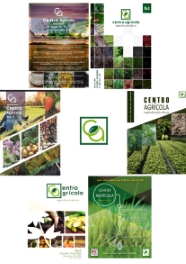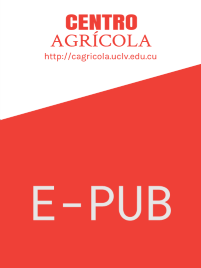CE: 1924 CF: cag062202264
RESEARCH ARTICLE
Components of the innovation system for the cuban forestry sector
Componentes del sistema de innovación para el sector forestal cubano
Yerenis Torres Cala1*
Maricela María González Pérez2
Roberto Muñoz González1
Alexis Orlando García Fleites3
1 Facultad de Ciencias Económicas, Universidad Central “Marta Abreu” de Las Villas (UCLV). Carretera a Camajuaní km 5 ½, Santa Clara, Villa Clara, Cuba, CP 54830
2 Universidad de Pinar del Río “Hermanos Saíz Montes de Oca” (UPR). Martí Final # 270, Pinar del Río, Cuba, CP 20100
3Centro de Estudios de Dirección Empresarial (CEDE), Facultad de Ciencias Económicas, Universidad Central “Marta Abreu” de Las Villas (UCLV). Carretera a Camajuaní km 5 ½, Santa Clara, Villa Clara, Cuba, CP 54830
*E-mail: This email address is being protected from spambots. You need JavaScript enabled to view it., This email address is being protected from spambots. You need JavaScript enabled to view it., This email address is being protected from spambots. You need JavaScript enabled to view it., This email address is being protected from spambots. You need JavaScript enabled to view it.
ABSTRACT
Innovation activities at any level of the economy must be systemically articulated and integrated, so that they generate the necessary synergies between the different actors, to promote development and achieve higher levels of income, benefit and diversification of productions. Thus, the Cuban forestry sector is of vital importance for the socioeconomic development of the country, both for the social and environmental contribution made by forests and for their contribution to satisfying the demands of strategic sectors in terms of products and services; however, the inadequate functioning of the innovation process, among other causes, does not allow it to meet these demands. This paper aims to propose the components of the system for innovation management in the forestry sector in Cuba. Theoretical and empirical methods were used, such as analysis and synthesis, inductive-deductive, content analysis, interview, survey and analysis of the network of actors, supported by the UNICET and NETDRAW 6,645 software. This allowed identifying the main strengths and weaknesses of the innovation process in the sector and proposing the components that should structure its innovation system. All the above contributes to the improvement of the sector's innovation process and serves as a benchmark for the design and implementation of policies and strategies, regarding its innovative performance and its contribution to the country's socioeconomic development with a view to the year 2030.







